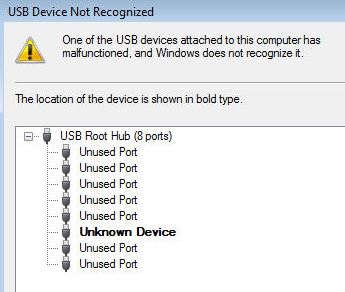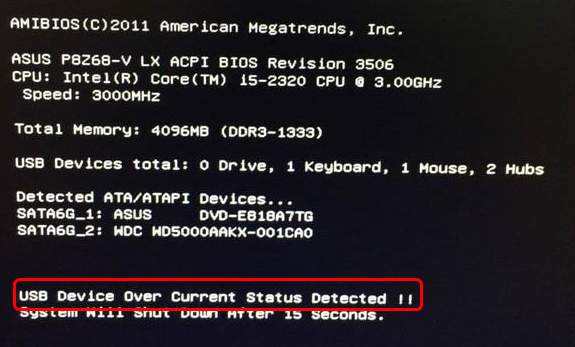Be aware that the behavior of an AutoRun-invoked device installation application must depend on whether the user plugs in the hardware first or inserts the distribution medium first. Since independent hardware vendors (IHVs) typically provide one distribution disk, and a disk can only have one AutoRun-invoked application, your AutoRun-invoked device installation application must determine whether your device is plugged in.
Getting started. Audio interfaces are the heart of every digital studio. In this article, we’ll show you. NORTHBROOK, IL, March 28, 2007 – Digital Check Corporation announced the availability of certified USB device drivers for its TellerScan® check scanners for all 32-bit versions of Microsoft’s recently released Vista operating system. The new USB device drivers are incorporated into Digital Check’s latest application programming interface (API) release, version 8.42, and offer support for all of Microsoft’s major operating systems, including 32-bit versions of Vista, Windows® XP. Important: If you are having problems with the initial setup of your scanner, including device not detected by your deposit software, please contact your bank or software provider first. Help Desk Numbers For general information about your CX30 scanner, use the links below to access documentation and training materials. Note: In step 2, don't select the Delete the driver software for this device check box. Connect the device to a different USB port. The problem may not occur if the device is connected to a different USB port. If the device is not yet connected, install the device-specific driver first.
To determine whether a device is plugged in, the application can call the UpdateDriverForPlugAndPlayDevices function, passing the hardware ID of the device. The device is plugged in if one of the following is true:
The function returns TRUE. (This also installs the driver for the device.)
The function returns FALSE and the Win32 GetLastErrorfunction returns ERROR_NO_MORE_ITEMS. (No installation occurs.)
The device is not plugged in if the function returns FALSE and GetLastError returns NO_SUCH_DEVINST. (No installation occurs.)

Drivers Digital Check Usb Devices Adapter
Reinstalling an Unplugged Device
When a device that formerly was attached is now unplugged, the device's devnode remains in the system, although it is both inactive and hidden. Before you can reinstall such a device, you must first find this 'phantom' devnode, and mark it as needing reinstallation. Then, when the device is plugged back in, Plug and Play will reenumerate the device, find the new driver for it, and install the driver for the device.
To reinstall an unplugged device:
Call the SetupCopyOEMInf function.
The SetupCopyOEMInf function ensures that the correct INF file is present in the %SystemRoot%inf directory.
Find the unplugged devices.
Call the SetupDiGetClassDevs function. In the call to this function, clear the DIGCF_PRESENT flag in the Flags parameter. You have to find all devices, not just those that are present. You can narrow the results of your search by specifying the particular device class in the ClassGuid parameter.
Find the hardware IDs and compatible IDs of unplugged devices.
SetupDiGetClassDevs returns a handle to the device information set that contains all installed devices, whether plugged in or not, in the device class (assuming that you specified a device class in the first step). By making successive calls to the SetupDiEnumDeviceInfo function, you can use this handle to enumerate all the devices in the device information set. Each call gives you an SP_DEVINFO_DATA structure for the device. To obtain the list of hardware IDs, call the SetupDiGetDeviceRegistryProperty function with the Property parameter set to SPDRP_HARDWAREID. To obtain the list of the compatible IDs, call the same function, but with the Property parameter set to SPDRP_COMPATIBLEIDS. Both lists are MULTI-SZ strings.
Look for a match between the ID of your device and the hardware IDs (or compatible IDs) of the previous step.
Make sure that you perform full string comparisons between the hardware ID/compatible ID and the ID for your device. A partial comparison could lead to incorrect matches.
When you find a match, call the CM_Get_DevNode_Status function, passing SP_DRVINFO_DATA.DevInst in the dnDevInst parameter. If this function returns CR_NO_SUCH_DEVINST, that confirms that the device is unattached (that is, has a phantom devnode).
Mark the device.
Call the SetupDiGetDeviceRegistryProperty function with the Property parameter set to SPDRP_CONFIGFLAGS. When this function returns, the PropertyBuffer parameter points to the device's ConfigFlags value from the registry. Perform a bitwise OR of this value with CONFIGFLAG_REINSTALL (defined in Regstr.h). After doing this, call the SetupDiSetDeviceRegistryProperty function, with the Property parameter set to SPDRP_CONFIGFLAGS, and the PropertyBuffer parameter set to the address of the device's modified ConfigFlags value This action modifies the registry's ConfigFlags value to incorporate the CONFIGFLAG_REINSTALL flag. This causes the device to be reinstalled the next time that the device is reenumerated.
Plug in the device.
Plug and Play will reenumerate the device, find the new driver for it, and install that driver.

Windows Driver for following products:
- Cine Serie
- DuoFlex Serie
- Octopus Serie
- MAX Serie
- Flex-CI Module
Note: Unfortunately, due no longer offered patches for the operating systems Windows Vista and Windows Server 2008 from Microsoft (not Windows Server 2008 R2), the installation of drivers for these operating systems are only possible up to version 2.6.2.126. For Windows XP driver Support is only given until Version 3.0.3.224.These can be found under the heading 'Older driver versions'.
If you have problems with Windows 7 please check whether the update KB3033929 is installed, this is included in the normal standard updates from Microsoft.
For installation from driver version 2.6.2.126 under Windows 10, disable Secure Boot in the UEFI (BIOS). You can find further information on the subject here:
Windows 10 Secure Boot - Digital Devices Driver
Open Usb Device
Windows 32-Bit (7, 8/8.1, 10)
Driver Version 3.1.1.248 (from 16.03.2020)
Windows 64-Bit (7, 8/8.1, 10)
Driver Version 3.1.1.248 (from 16.03.2020)
Linux


Downloads and instructions
Firmwareupdates
Downloads and instructions
Description DD Control Center
Description, new DD Control Centers (up Driver V 2.6.0.108)
Drivers Digital Check Usb Devices Download
ChangeLog
Driver Version 3.1.1.248 (driver from 16.03.2020)
Older Driver versions
Usb Device Drivers Windows 10
Quick Support
We bring you the support directly to your home

 -->
-->